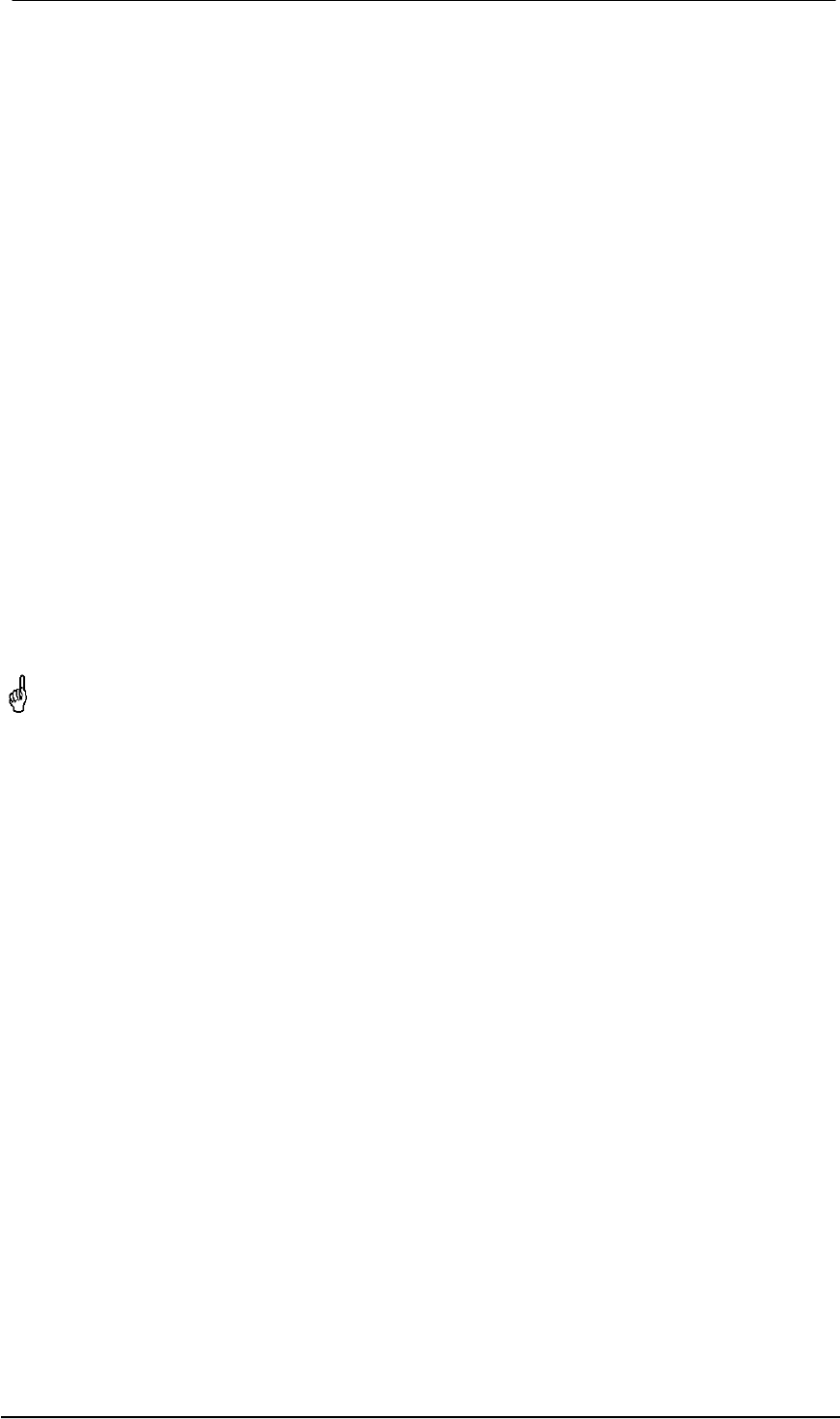
User's Guide HDSP System Multiface II © RME
39
System Clock
Shows the current clock state of the HDSP system. The system is either Master (using its own
clock) or Slave (see AutoSync Ref).
SyncCheck
SyncCheck indicates whether there is a valid signal (Lock, No Lock) for each input (Word
Clock, ADAT, SPDIF), or if there is a valid and synchronous signal (Sync). The AutoSync Ref-
erence display shows the input and frequency of the current sync source.
20.2 Clock Modes - Synchronisation
In the digital world, all devices are either the ‘Master’ (clock source) or a ‘Slave’ synchronized to
the master. Whenever several devices are linked within a system, there must always be a sin-
gle master clock. The Hammerfall DSP’s intelligent clock control is very user-friendly, being able
to switch between clock modes automatically. Selecting AutoSync will activate this mode.
In AutoSync mode, the system constantly scans all digital inputs for a valid signal. If this signal
corresponds with the current playback sample rate, the card switches from the internal quartz
(AutoSync Ref displays 'Master') to a clock generated from the input signal (AutoSync Ref dis-
plays 'Slave'). This allows on-the-fly recording, even during playback, without having to syn-
chronize the card to the input signal first. It also allows immediate playback at any sample rate
without having to reconfigure the card.
AutoSync guarantees that normal record and record-while-play will always work correctly. In
certain cases however, e.g. when the inputs and outputs of a DAT machine are connected di-
rectly to the Hammerfall DSP, AutoSync may cause feedback in the digital carrier, so synchro-
nization breaks down. To remedy this, switch the HDSP’s clock mode over to 'Master'.
Remember that a digital system can only have one master! If the HDSP’s clock mode is set
to 'Master', all other devices must be set to ‘Slave’.
The Hammerfall DSP's ADAT optical input and the SPDIF input operate simultaneously. Be-
cause there is no input selector however, the HDSP has to be told which of the signals is the
sync reference (a digital device can only be clocked from a single source). This is why the sys-
tem has been equipped with automatic clock source selection, which adopts the first available
input with a valid digital signal as the clock reference input. The input currently used as sync
reference is shown in the AutoSync Ref status field, together with its sample frequency.
Via Pref. Sync Ref (preferred synchronization reference) a preferred input can be defined. As
long as the card sees a valid signal there, this input will be designated as the sync source, oth-
erwise the other inputs will be scanned in turn. If none of the inputs are receiving a valid signal,
the card automatically switches clock mode to ‘Master’.
To cope with some situations which may arise in studio practice, setting ‘Pref Sync Ref’ is es-
sential. One example: An ADAT recorder is connected to the ADAT1 input (ADAT1 immediately
becomes the sync source) and a CD player is connected to the SPDIF input. Try recording a
few samples from the CD and you will be disappointed. Few CD players can be synchronized.
The samples will inevitably be corrupted, because the signal from the CD player is read with the
(wrong) clock from the ADAT i.e. out of sync. In this case, 'Pref Sync Ref' should be temporarily
set to SPDIF.


















